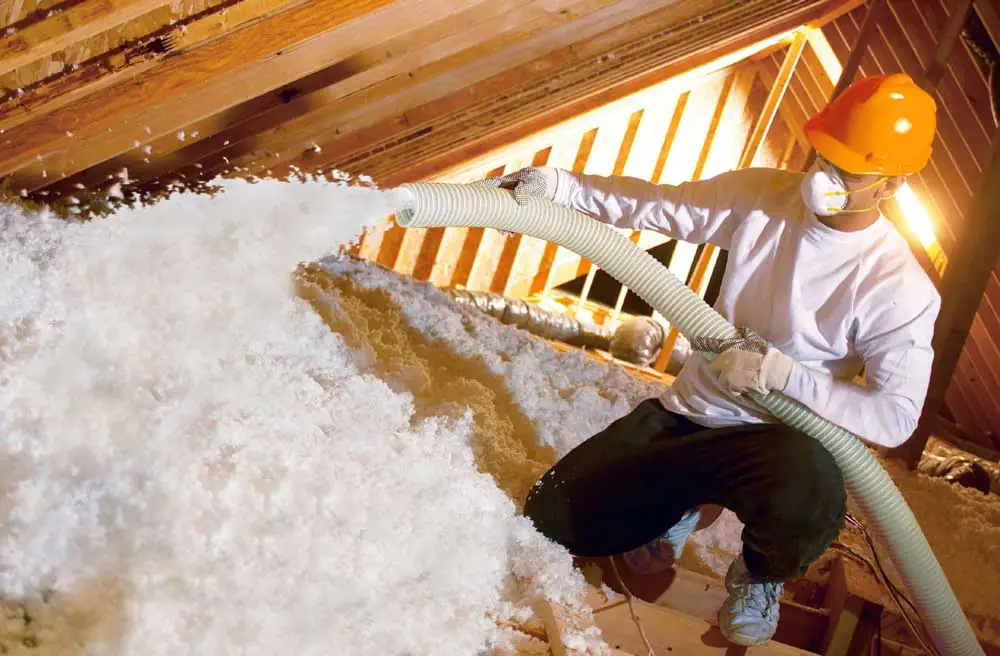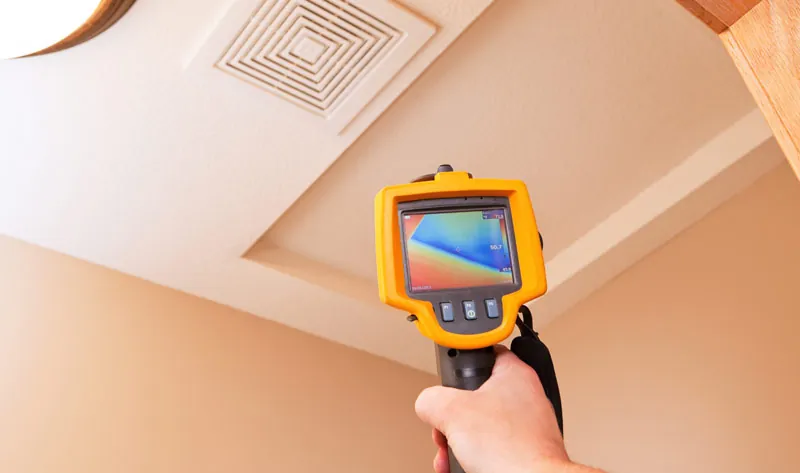When it comes to your home, building codes aren’t just about rules and red tape, they’re there to keep your home safe, comfortable, and energy efficient. Here in Virginia, insulation requirements have changed a lot over the years. What was adequate a decade or more ago may no longer meet today’s building code. So, if you’re the owner of an older, single-family Virginia home, how do you know if your home is up to the latest standards? Let’s take a look.Understanding Virginia’s Insulation Code Basics
Understanding Virginia’s Insulation Code Basics
Virginia follows the Virginia Uniform Statewide Building Code (USBC), which sets minimum R-value requirements for different areas of your home. R-value measures how well insulation materials resist heat flow. The higher the number, the more powerful the insulation.

Our state is divided into three climate zones, with our areas of Lynchburg and central Virginia falling into climate zone 4, a mixed humid climate. A small portion of northern Virginia is in climate zone 5 while the southern areas are in zone 3. Our state’s energy code is based on the International Energy Conservation Code (IECC) that is updated and released every three years. Virginia applies its own state-specific modifications to the code before adopting it.
Recent Code Updates: Higher Attic R-Values
The 2021 Virginia Residential Code (VRC) went into effect in January of 2024. In it, the state raised its insulation requirements for attics in newly built or renovated homes compared to the previous code’s requirements (the 2018 VRC). Homes in climate zones 3 and 4 must now have insulation equaling R-60 in vented ceilings, up from the previous R-49. That translates to about 18–20’’ of blown fiberglass to achieve R-60 versus about 15” to reach R-49.
While the 2024 International Residential Code reduced its recommendation back to R-49, Virginia has stayed committed to the R-60 requirement to continue to improve energy efficiency in homes across the state.
Take note: R-60 applies mainly to vented attics in single-family homes. If your attic is an unvented or conditioned space, the rules may differ. Always check with your local building department for specifics.
Does Your Older Home Measure Up?

Most older homes in our state fall short of current energy standards. Typically, if your house is 10–15 years old, it was built with R-38 insulation requirements in the attic (about 12” of blown in fiberglass or 10” of cellulose insulation), well below today’s standard.
If your home is twenty or more years old, your attic may have been insulated to about R-19 to R-30, which equates to only a few inches of insulation.
You aren’t required to upgrade your existing insulation unless you undergo major renovations, but it’s always smart to check what’s there. Take the time to measure your attic’s insulation thickness and type of insulation. Call on a professional to inspect your home and give you the most accurate R-value assessment.
Why Up-to-Code Insulation Matters
So, why does it matter if your house is up to code on insulation? The biggest reason is energy efficiency. Having a higher R-value of insulation significantly reduces your home’s heat loss in winter and heat gain in summer. You’ll enjoy lower utility bills while your home uses less energy.
A properly insulated and air sealed home helps you enjoy a more comfortable living space with less drafts, more consistent temperatures, and even noise reduction. Plus, a well-insulated home is more attractive to energy-conscious buyers and stands out in today’s market, giving you a competitive edge.
Bringing Your Home Up to Code
Take these steps to bring your house up to code:
Step 1: Assess your current insulation
Check the depth and type of insulation currently in your attic or crawlspace. Compare it to the current R-60 recommendation which is about 18+ inches for most loose fill types of insulation.
Step 2: Get a professional evaluation

Undergoing a professional home energy audit or insulation inspection is the best way to identify gaps, compression issues, and energy leaks in your home. Insulation experts like Toler Insulating will evaluate your home and provide tailored insulation solutions.
Step 3: Plan your upgrade (if needed)
You can often add new insulation materials like fiberglass or cellulose over existing insulation, if your original insulation is still in good shape. Remember these tips: Be sure to seal air leaks before adding insulation. Don’t block ventilation eaves and install attic baffles if needed.
Step 4: Verify compliance
Expect the building inspector to check on things during permitted renovations. Verify you’re reaching your target insulation level. It’s good to have a reminder of what you’re installing. Many contractors often label the insulation installed with R-value and date.
Step 5: Enjoy the benefits
Now it’s time to sit back and reap the benefits of a well-insulated and air sealed home. Enjoy immediate energy savings, improved comfort and a very welcome ROI through reduced utility bills.
Why Choose Toler Insulating
Having served the Lynchburg area since 1994, our local, experienced team at Toler Insulating knows the Virginia Uniform Statewide Building Code inside and out. We stay on top of all state insulation standard updates and have a firm grasp on Virginia’s climate needs. Our goal is to optimize your home’s energy efficiency with effective insulation that meets or exceeds the state energy code. Whether you’re upgrading or building new, you can count on safe, code-compliant, and efficient work that exceeds your expectations.
Give Yourself Long-Term Peace of Mind
Your home is your biggest investment, and proper insulation protects and improves it for many years to come. With higher standards now in place, many older homes fall short. Ensuring your home’s insulation is up to code is an investment in lower energy bills, enhanced comfort, and long-term peace of mind. At Toler, we’re here to help. Contact us today to check your home’s insulation and make sure you’re up to date.
References
“Building Smarter Envelopes: A Guide to the 2021 Virginia Energy Code for Architects.” AIA Virginia, https://www.aiava.org/building-smarter-envelopes-a-guide-to-the-2021-virginia-energy-code-for-architects/
“Chapter 4 [RE] Residential Energy Efficiency.” International Code Council, https://codes.iccsafe.org/s/VAECC2021P1/chapter-4-re-residential-energy-efficiency/VAECC2021P1-RE-Ch04-SecR402.2
“Energy Efficiency 101.” Virginia Energy Efficiency Council, https://vaeec.org/learn/ee-intro/
“Technical Memorandum: 2021 Virginia Residential Code FAQ.” Virginia Department of Housing and Community Development, https://www.dhcd.virginia.gov/sites/default/files/DocX/technical-memos-bulletins/2021-vrc-faq.pdf
“Virginia Uniform Statewide Building Code Updates.” Virginia Energy Efficiency Council, https://vaeec.org/virginia-uniform-statewide-building-code-updates/